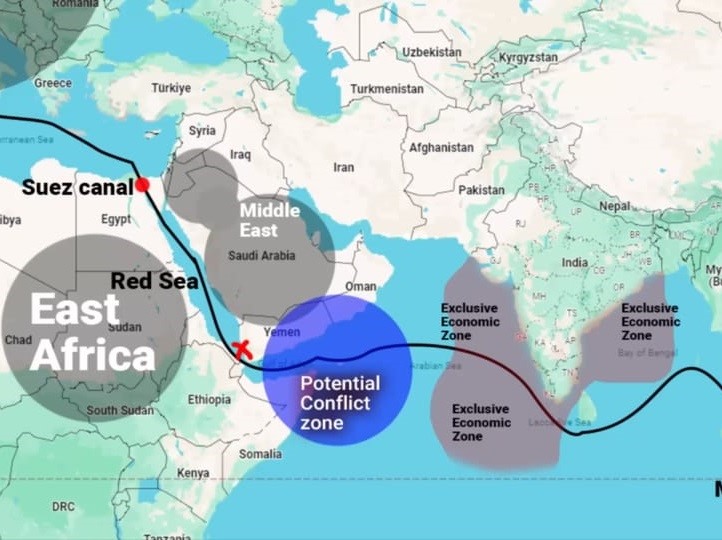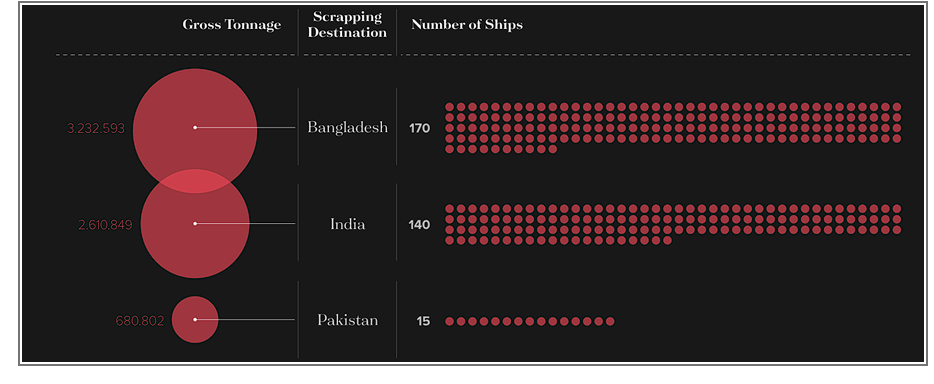Top 10 Biggest Shipyards In The World
Shipyards are extensive facilities which manufacture and repair ships, right from the designing to engineering and the final assembly. Some yards offer full lifecycle services for ships while others focus just on conversions and repairs. Nonetheless, these yards with modern equipment are pivotal for the construction of massive commercial and naval vessels. Some of the largest shipyards in the world are situated in Asia as we will see in this article.
1. Hyundai Heavy Industries Shipyard in Ulsan
A shipbuilding and offshore engineering company, based in Ulsan, South Korea, HHI was established in 1972 and is one of the key players in the maritime industry.
It operates four shipyards and also has facilities in Vietnam. The main shipyard is in Ulsan and it stretches more than 4 km along the coast of Mipo Bay. One of the biggest shipyards in the world, it is known for building vessels including chemical and product tankers, crude oil tankers, container ships, liquified carriers, car carriers, juice carriers, Ro-Pax, asphalt carriers, bulk carriers and molten sulphur carriers.
The facility is high-tech with AI and automation systems in place to streamline operations. It is striving to boost its competitiveness by developing eco-friendly ships driven by alternative fuels like ammonia or methanol and also hybrid electric propulsion ships and liquified hydrogen carriers.
This shipyard has delivered more than 400 new ships since 2009, while HD Hyundai Heavy Industries has built over 2,300 ships for 331 shipowners in 51 countries until 2023.
2. Mitsubishi Heavy Industries Nagasaki Shipyard
Mitsubishi Heavy Industries has one major shipyard, the Nagasaki Shipyard & Machinery Works which is spread over 3 sites, Nagasaki Plant, the Koyagi Plant and the Isahaya Plant. There are two other shipyards as well, the Kobe shipyard and and the Shimonoseki shipyard.
The Nagasaki Shipyard is known for constructing advanced and sturdy vessels like LNG Carriers and Cruise Ships.
The history of the main plant started with the founding of the Nagasaki Yotetsusho Foundry by the Tokugawa Shogunate in 1857. The plant has a ship building berth, on which the popular battleship “Musashi” was built, and also a 300,000-ton dry dock.
3. DSME’ Okpo Shipyard
Daewoo Shipbuilding & Marine Engineering based in South Korea, is one of the biggest shipbuilders which specialise in constructing different types of vessels, offshore platforms and marine structures.
Its Okpo Shipyard covers more than 4000000 m2 of land area and has facilities and equipment for ship repairs, maintenance and ship construction. It has a dock which can accommodate a 1,000,000 ton vessel and a 900 ton Goliath crane, making it one of the world’s largest shipyard.
The shipyard constructs submarines, destroyers, drill ships, offshore plants, FPSO/FSUs and offers tour programs for visitors.
In 2024, Daewoo Shipbuilding & Marine Engineering (DSME) won contracts to build 8 liquefied natural gas vessels and 2 LNG carriers.
4. Dalian Shipyard
Dalian Shipbuilding Industry Co, Ltd, (DSIC) operates under the China Shipbuilding Industry Company Limited.This is the biggest Chinese shipyard and one of the biggest shipbuilding contract holders in the world.
It can design and construct ships of various kinds and tonnages, including fishing vessels of 1000 tonnes in deadweight to VLCCs of 300,000 tonnes in deadweight, from bulk carriers and oil tankers to 10,000 TEU containerships and LNG Carriers. It also builds LNG Carries, Offshore vessels etc.
5. Samsung Heavy Industries’ Geoje Shipyard
The company has an impressive record of completing many of the world’s first and largest shipbuilding and offshore EPC Projects.
It also constructed the first Arctic Shuttle-Tanker and LNG-FPSOs in the world and developed innovative products like the LNG-FSRU, and various ships for polar applications, and Arctic Ice-Breaker Container Ships.
Its Geoje Shipyard boasts the world’s greatest dock turnover rate. The biggest dock at this shipyard is Dock No 3, which is 640 m long, 97.5 m wide and 13 m deep.
6. Huntington Ingalls Industries Shipyard
Newport News Shipbuilding, a division of the HII is the sole designer, builder and refueler of the U.S. Navy’s nuclear-powered aircraft carriers and one of the only two companies capable of building nuclear submarines.
It also provides services to naval vessels and recently expanded their manufacturing expertise into the Department of Energy and alternative energy business ventures.
7. Jiangnan Shipyard
One of the oldest Chinese shipyards, this facility is the subsidiary of the China State Shipbuilding Group. It is situated northeast of Shanghai on Changxing Island at the mouth of the River Yangtze, covering 580 million square metres. Gas carriers are the specialty of this yard.
It was constructed between 2005 and 2007 to replace the existing facilities that were in Shanghai. Operations at the new site began in 2008 and 2009.
8. Jurong Shipyard
A subsidiary of Sembcorp Marine, this facility covers 65 hectares of land in Singapore. It offers shipbuilding services, ship repairs, and offshore engineering services.
It has 4 graving docks with a total capacity of 1,100,000 DWT and 2728 m of berthing quays with a draft of 9 m.
There are areas for designing, engineering, fabrication and craneage facilities along with hull workshops and warehouses.
Jurong Shipyard has constructed many container ships, drill ships, FPSOs and Jack-up rigs.
9. Imabari Shimanami Shipyard
Situated in Shimanami, Japan, this facility is owned by the Imabari Shipbuilding Co., Ltd. It was established in 1928 and since then has become one of the most reputed shipyards in the country, specialising in construction of massive container ships, bulk carriers, and tankers.
It has a total of 4 dry docks, the biggest of which can accommodate ships with a length of up to 400 m.
10. HJ Shipbuilding & Construction’s Busan Yard
HJ Shipbuilding & Construction Co., Ltd. was founded in 1937 and is the oldest shipbuilder in the country.
It constructs commercial ships, special ships and has a history of building innovative vessels, including the first membrane-type LNG Carrier ever built in Asia.
Its Busan Facility has a maximum annual capacity of 900,000 DWT and the maximum size of the ship that can be built is limited by the dry dock’s 150,000 DWT capacity.





















































